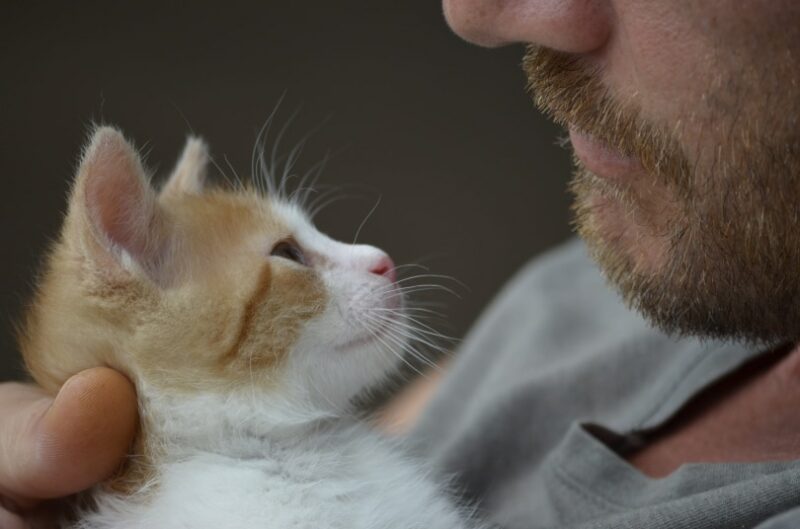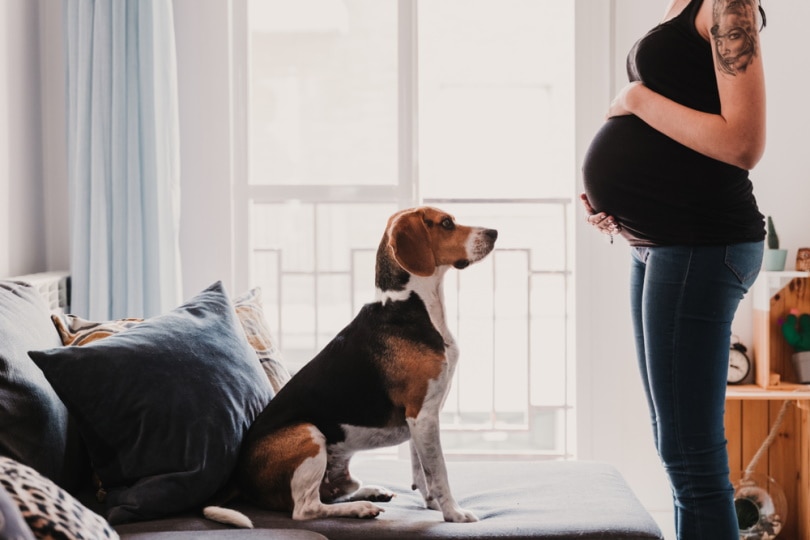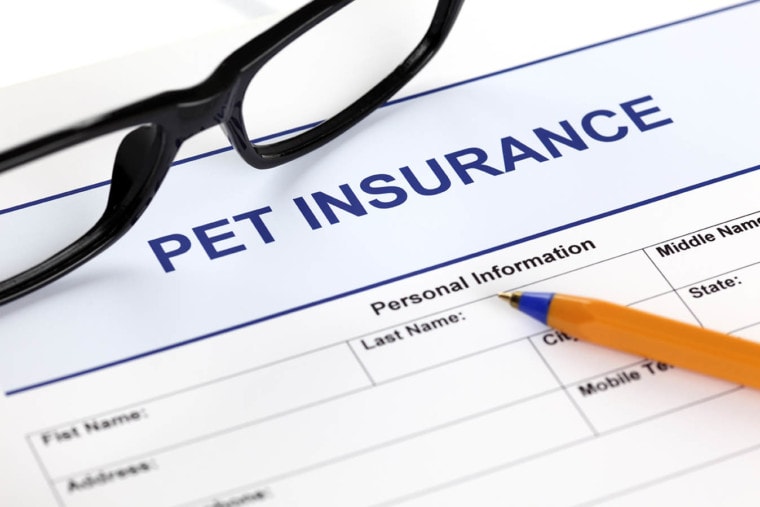
Many new puppy owners are at least slightly aware of the dreaded “parvo” and that it can be serious and even deadly for their baby dogs. What they may not know, however, is that treating this disease successfully requires intense medical care that can quickly become very expensive. Dog owners considering buying pet insurance might wonder if their policy covers parvo.
Yes, most pet insurance policies cover treatment for parvo, although whether or not it is standard depends on the specifics of the policy, and there are exceptions. In this article, we’ll give you a crash course on parvo and examine some circumstances where your pet insurance might not cover treatment for this illness. We’ll also give you tips on keeping your dog from getting infected.
What Is Parvo?
Parvo, short for parvovirus1, is a highly contagious disease in dogs. Any age dog can catch parvo, but it primarily impacts puppies younger than 4 months and unvaccinated canines.
Parvo is spread by direct contact between dogs or by a dog encountering the virus on a contaminated surface. Humans can also spread the virus to other locations on their clothing, hands, or shoes.
Parvo is extremely tough and can live on surfaces, including soil, for a long time and continue to infect dogs in the process. Parvovirus attacks mainly the dog’s intestinal tract, causing intense vomiting and diarrhea. Other symptoms of parvo include lethargy, loss of appetite, fever, and belly pain.
Anytime parvo is suspected, the faster treatment can begin, the better. There is no cure for the disease itself, and treatment consists of supportive care (often intensive) as the dog’s body fights off the virus.
Dogs with parvo usually require hospitalization, IV fluids, and medications to control vomiting and diarrhea. Severe cases may go into septic shock and require even more specialized management.
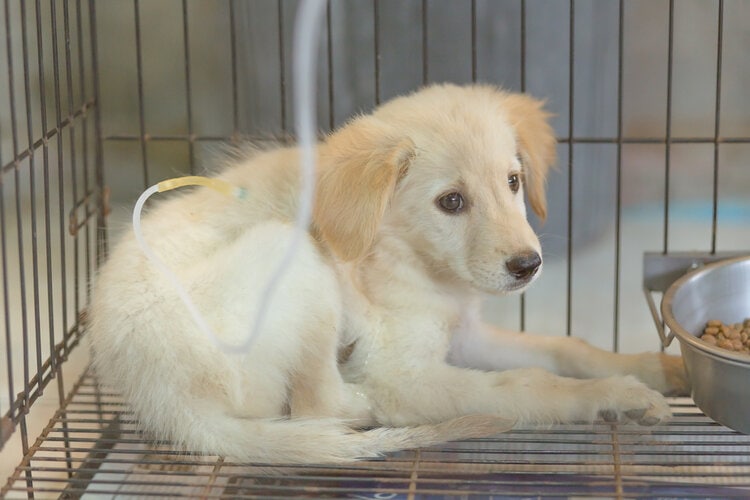
Pet Insurance and Parvo
Based on our research, most pet insurance policies cover parvovirus care and treatment under their accident and illness plans. Generally, you’ll need to meet a deductible before coverage kicks in. Depending on your policy, you may have annual coverage limits that govern how much your insurance will pay out for the parvovirus treatment.
Another point to remember is that almost no pet insurance policy pays your veterinarian directly, Trupanion2 being the major exception. Most insurance policies require you to cover the bill on your own, file a claim with documentation, and wait for reimbursement.
The time it takes for a claim to be accepted and paid out varies considerably. Lemonade3, for example, advertises that they can approve claims in minutes. Others may take as long as 30 days.
Comparing policies is the best way to know if you are getting the coverage that you need.
Top Rated Pet Insurance Companies:
The 4 Reasons Why Parvo Might Not Be Covered
There are also a few circumstances that may keep your parvovirus treatment from being covered. Let’s look at a few of those now.
1. Preventable Conditions Aren’t Covered
Some pet insurance policies won’t cover conditions that they consider “preventable.” Lemonade, for example, may not cover these conditions. Because parvo is a vaccine-preventable disease, treatment may not be paid for if you don’t get your pup their shots.
Some dogs fail to develop immune protection from parvo, even though they are completely vaccinated. In those cases, you may have a valid argument to claim coverage. To be safe, compare policies carefully and pick one that explicitly states that conditions like parvo are covered.
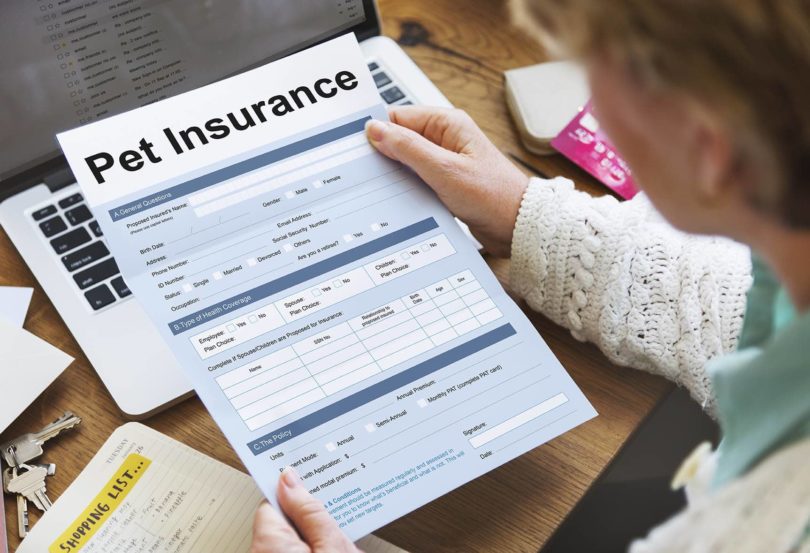
2. Waiting Period Isn’t Over
Almost every pet insurance policy has a waiting period before full coverage kicks in. These tend to vary based on condition or disease. For example, accidents may be covered in only 2 days, while you may have to wait 6 months before a knee surgery is paid for.
If your dog is diagnosed with parvo during the waiting period, treatment most likely won’t be covered. If you already know you want pet insurance for your dog, try to buy a policy as soon as possible to prevent this scenario.
Unfortunately, some people purchase puppies from irresponsible breeders and may end up dealing with a case of parvo almost as soon as they get their dogs home. Pet insurance most likely won’t have time to help you in this case, so check the waiting period fine print carefully.
3. It’s a Pre-existing Condition
Most pet insurance policies don’t cover pre-existing conditions. Generally, this refers to any medical condition your dog dealt with before the policy was purchased. Now, there is some variation between insurance companies regarding the definition of a pre-existing condition, so you’ll need to do your research.
However, if your dog survives parvo once, before you got the insurance coverage, and is unlucky enough to catch it again, it may not be covered the second time around. Again, try to get your dog covered as soon as possible to minimize potential pre-existing conditions.
4. Preventing Parvo Infections
As we already discussed, parvo is almost always preventable due to the existence of an effective vaccine. However, besides keeping your dog up-to-date on shots, there are some other steps you take to prevent parvo infections.
When buying or adopting a puppy, find out which shots they’ve already received. It’s usually recommended to start the puppy shot series at 6–8 weeks, and puppies often receive their first dose before going to their new homes.
If a breeder says their puppies have had shots, find out if a veterinarian administered them or if the breeder vaccinated them personally. Since you can’t know whether the breeder stored or administered the shots correctly, be extra cautious with a puppy a licensed vet didn’t vaccinate.
Puppies aren’t considered protected from parvo until they complete the full vaccine series, usually at 16 weeks or so. Until then, minimize their contact with other dogs, especially ones whose vaccine status is unknown. Avoid puppy classes and dog parks until the pup is fully vaccinated.
Make sure you keep up with your dog’s booster shots throughout their life. Alternately, you can ask your vet about performing vaccine blood tests that measure the level of protective antibodies in your dog’s system.
Summary
While most pet insurance policies cover parvo treatment, there are some exceptions. As you compare pet insurance policies, be especially careful to read the fine print regarding coverage limits and what is and is not paid for by the plans. If you’re looking for coverage for annual wellness care, including parvo shots, they are generally not part of a standard pet insurance plan. However, many pet insurance policies provide the option of adding a wellness coverage plan for an additional fee.
If you decide not to purchase pet insurance, make sure you have an alternate plan to help pay for unexpected medical costs, such as a pet savings account.
See also:
- Does Pet Insurance Cover Euthanasia? Standard Policies
- 10 Best Pet Insurance Providers for Golden Retrievers – Reviews & Comparisons
Featured Image Credit: Ekaterina Minaeva, Shutterstock




